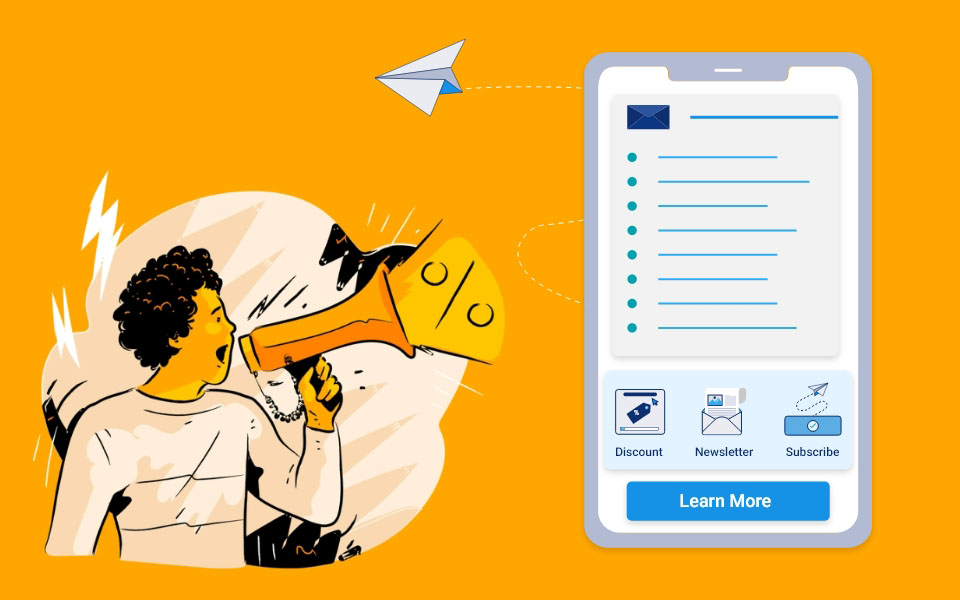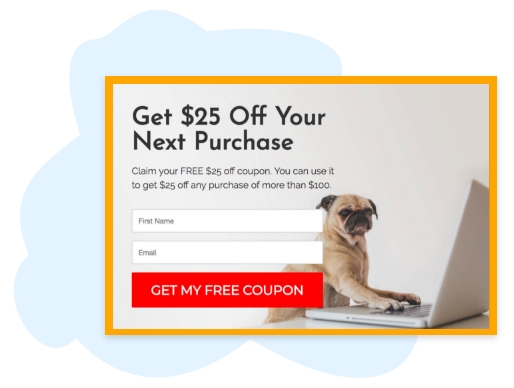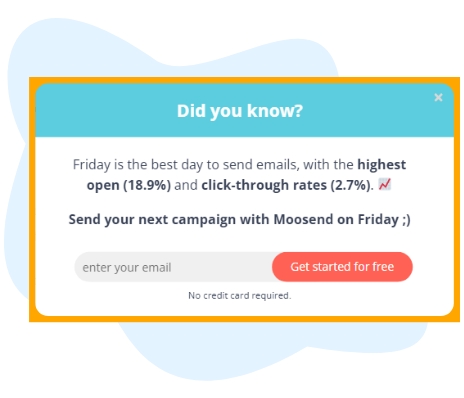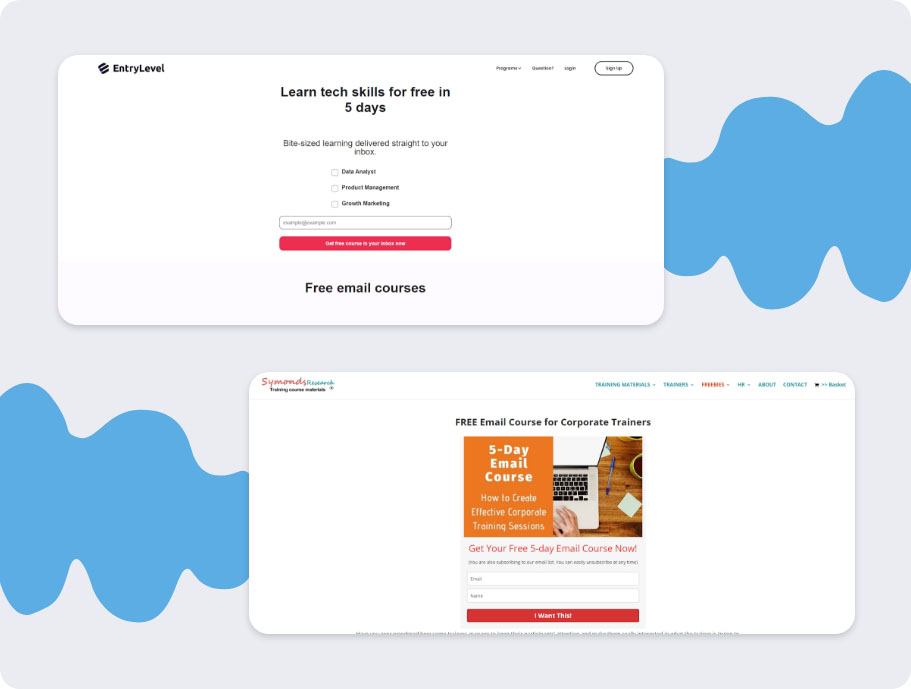Subscribe to Our Newsletter
Stay updated with the latest tips and strategies. Get additional discounts and alerts on offers.

Email Marketing became popular when startups started understanding its crazy high ROI. Comparing it to other marketing techniques such as PPC, email marketing gives you way more results for less money and more efficiency. Additionally, once you build an email marketing list with white practices, it will always be there with you.
“ROI from email marketing now stands at just over £42 for every pound spent; a rise of almost £10 since the previous study.” – DMA Marketer Email Tracker
Many understand the benefits of email lists. However, getting the list-making part done is what makes it challenging. How do you get people to give you their emails and contact details?
Let’s talk about 3 effective ways to do that correctly without doing the following:
1) Offer exciting discounted deals or coupon codes upon sign up

Let’s accept it! We all have entered our emails on some eCommerce sites, as they offer 20% discounts upon sign-ups. But are we sure we purchased something with that coupon right away?
Maybe yes, maybe no. What happened is that we gave away our contact information in the hopes that we would get something we might want for less than its original price.
But now the company has our email address where they can send us attractive deals and offers, benefits of their products, and how it is better than other products in the market.

Coupons sent via email make the users feel special. It gives them the feeling of being the unique chosen one to receive that particular coupon.

Even if the user doesn’t purchase right away, the company still has access to the personal information of that user. By strategically placing the sales funnel, they still have a chance to convert them.

The discount sign up pop-up should be attractive. After looking at the appetizing discount creative, users should instantly feel like giving their email addresses away.

To make it alluring, we can employ multiple techniques such as pop-ups (exit-intent pop-ups, welcome pop-ups, promotional pop-ups, timed pop-up forms, etc.) or gamification (spin the wheel, scratch the card, plant a tree by tapping on the seed, etc.).

Users should feel that they have earned the reward.
2) Offer them a free useful reward
Let’s consider a scenario. You are a cloud hosting company, and your prospects are those who own or want to own a website. This could be startups, offline retail businesses, mobile app-only businesses, influencers, YouTubers, podcasters, etc.
So, to collect their email addresses as leads, you will have to fetch them in your sales funnels. At the top of this funnel, you will want to give them a free and useful resource. It could be a free webinar, course, eBook, or maybe a free trial of your service.
The next thing you want to do is locate where they are and target your free product. This could be LinkedIn, Twitter, or any other social media platform, depending on who your prospects are.
When you give your prospects something that they find useful, they will happily enter their email address in your form, thus, entering your sales funnel.
What this story teaches us to build an email marketing list?

Know your demographic. You want those people to sign up who are likely to buy something from you.

Create a helpful lead magnet for which your prospects will want to give their email address.
3) Offer a weekly or daily bonus through newsletters
Many B2B businesses around the world are repurposing their content smartly. Here are some examples of how they are using it to build an email marketing list.

Free Email Courses: Many websites offer free short courses with a simple email model. The user signs up for the course and an email with one chapter gets delivered every day to their mailbox. For example, entrylevel.net and symondsresearch.com among others.


Newsletters: There are some companies whose newsletters have made a mark on their audience. Their content is good and authentic as people have written blogs about their newsletters and earned money. Make your newsletter stand out! You will not want to miss out on the mouth publicity to build an email list even further. For example, your subscribers share your newsletters with friends or recommend your content to their peer network on LinkedIn.
For example, if you are a business mentor or a funding agency, give an update to your audience about the happenings of that week. Which startup received an investment and which startup became a unicorn.
If you’re a marketing agency, send weekly reports about Google Updates released this week, or what’s trending on Instagram, etc. Spend some time and curate such valuable information that your audience won’t find anywhere that quickly! That is how your newsletter will be talked about in the community and more people will want to sign up.
These were the top 3 hacks that companies use to get their customers hooked. However, there are multiple other hacks as we have mentioned below.
What hack works best for you also depends on what your business is. Newsletters would work better for service-based agencies and bloggers. However, giveaways and discounts would work better for product-based companies.
For B2B businesses, growing the subscriber count from 0 to 10, 10 to 50 and then, 50 to 100 are happy milestones. Here are a few tips to help you achieve those:
There is no magic number of email subscribers needed in your mailing list for a product launch. Almost all the time, the quality of subscribers matters more than the number.
Having said that, the standard rule of thumb that the industry has seen is to have around 1000 subscribers before launching a product.
The growth rate and the associated profit depends on multiple factors. For some businesses, smaller lists can also produce great profits. While, some businesses may struggle to generate income with massive lists.
As per the marketing studies and standards we have studied, the average growth rate of an email list is around 5.2% per month.
Show Some Love!

Subscribe to Our Newsletter
Stay updated with the latest tips and strategies. Get additional discounts and alerts on offers.
Related Articles
Subscribe to Newsletter
Stay up to date with the latest marketing, sales, and service tips and news.
